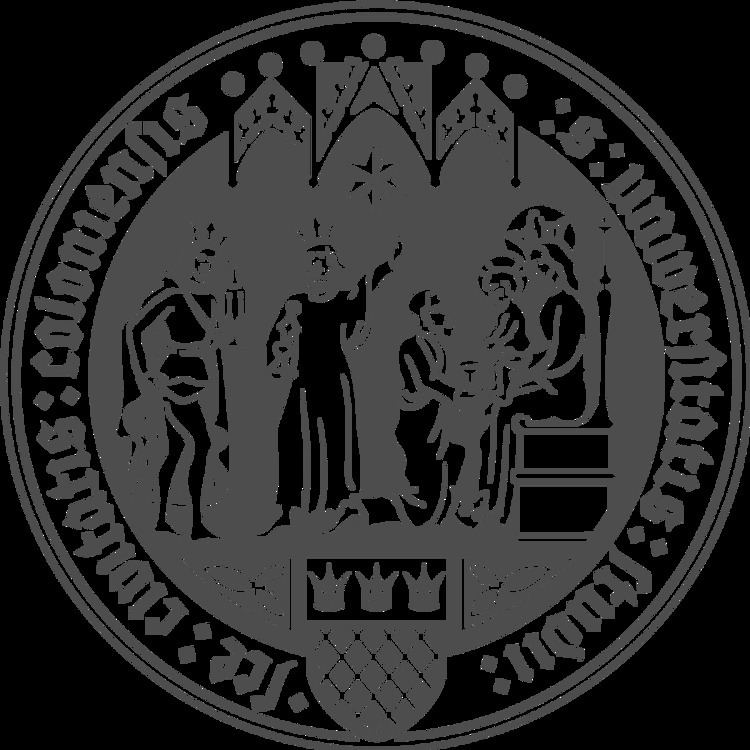Rector Axel Freimuth Administrative staff 4,557 Postgraduates 3,718 Total enrollment 49,772 (2014) | Academic staff 482 Students 48,179 (2014/15) Undergraduate tuition and fees 0 EUR (2011) | |
 | ||
Established 1388/1919Closed 1798—1919 Address Albertus-Magnus-Platz, 50923 Köln, Germany Notable alumni Heinrich Böll, Karolos Papoulias, Jan Böhmermann, Wilma Elles, Armin Falk Profiles | ||
International program university of cologne
The University of Cologne (German: Universität zu Köln) was the sixth university to be established in Central Europe and, although it closed in 1789 before being re-established in 1919, it is now one of the largest universities in Germany with more than 48,000 students. The university has been part of the German Universities Excellence Initiative since 2012, and as of 2015 it ranks 156th globally according to Times Higher Education, 305th according to QS World University Rankings and between 151 and 200 according to the Academic Ranking of World Universities.
Contents
- International program university of cologne
- 13881798
- 1919today
- Organization
- Faculties
- Rectors
- Students and faculty
- Partner universities
- Notable alumni and professors
- References
1388–1798
The University of Cologne was established in 1388 as the fourth university in the Holy Roman Empire, after the Charles University of Prague (1348), the University of Vienna (1365) and the Ruprecht Karl University of Heidelberg (1386). The charter was signed by Pope Urban VI. The university began teaching on January 6, 1389. In 1798, the university was abolished by the French, who had invaded Cologne in 1794, because under the new French constitution, universities were abolished all over France.The last rector Ferdinand Franz Wallraf was able to preserve the university’s Great Seal, now once more in use.
1919–today
In 1919, the Prussian government endorsed a decision by the Cologne City Council to re-establish the university. On May 19, 1919, the Cologne Mayor Konrad Adenauer signed the charter of the modern university.
At that point, the new university was located in Neustadt-Süd, but relocated to its current campus in Lindenthal on 2 November 1934. The old premises are now being used for the Cologne University of Applied Sciences.
Initially, the university was composed of the Faculty of Business, Economics and Social Sciences (successor to the Institutes of Commerce and of Communal and Social Administration) and the Faculty of Medicine (successor to the Academy of Medicine). In 1920, the Faculty of Law and the Faculty of Arts were added, from which latter the School of Mathematics and Natural Sciences was split off in 1955 to form a separate Faculty. In 1980, the two Cologne departments of the Rhineland School of Education were attached to the university as the Faculties of Education and of Special Education. In 1988, the university became a founding member of the Community of European Management Schools and International Companies (CEMS), today's Global Alliance in Management Education.
The University is a leader in the area of economics and is regularly placed in top positions for law and business, both for national and international rankings.
Organization
The University of Cologne is a statutory corporation (Körperschaft des öffentlichen Rechts), operated by the Federal State of North Rhine-Westphalia.
Faculties
The university is divided into six faculties, which together offer 200 fields of study. The faculties are those of Management, Economics and Social Sciences, Law, Medicine (with the affiliated University clinic), Arts, Mathematics and Natural Sciences and Human Sciences.
Rectors
On November 24, 2004, Axel Freimuth was elected as the Rector of the University. His four-year term began on April 1, 2005. He succeeded Tassilo Küpper and is the 49th Rector since 1919. He was previously Dean of Mathematics and Natural Sciences.
Students and faculty
In 2005, the University enrolled 47,203 students, including 3,718 graduate students. In 2003, the number of post-doctoral students was 670.
The number of international students was 6,157 in the Summer Semester of 2005. This amounts to approximately 13% of the total students. Those from developing countries made up about 60%, representing a total of 123 nations. The largest contingents came from Bulgaria (10.5%), Russia (8.8%), Poland (7.4%), China (6.2%) and Ukraine (5.7%).
There are 508 professors at the university, including 70 women. In addition, the university employs 1,549 research assistants, with an additional 765 at the clinic, and 1,462 other assistants (3,736 at the clinic).
Partner universities
The University of Cologne maintains twenty official partnerships with universities from ten countries. Of these, the partnerships with Clermont-Ferrand I and Pennsylvania State are the oldest partnerships. In addition, Cologne has further cooperations with more than 260 other universities.
Notable alumni and professors
Over the centuries, scholars from Cologne have been among the most prominent in their fields, beginning with Albertus Magnus and his pupil Thomas Aquinas (both 13th century). Notable alumni of the 20th century include among others Kurt Alder (Nobel Prize in Chemistry 1950), Peter Grünberg (Nobel Prize in Physics 2007), Heinrich Böll (Nobel Prize for Literature), Karl Carstens (president of the Federal Republic of Germany 1979–1984), Gustav Heinemann (president of the Federal Republic of Germany 1969 to 1974), Karolos Papoulias (former president of the Hellenic Republic), Erich Gutenberg (founder of modern German business studies), and Axel Ockenfels.
